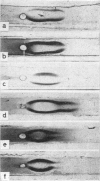Abstract
Guinea-pigs were immunized by injections of blood group substance with incomplete adjuvant, followed after an interval of approximately 2 weeks, by intracutaneous immunization with the same antigen and Freund's adjuvant containing M. tuberculosis. This treatment inhibited the appearance of delayed skin reactions, while circulating antibody production took place as in controls which had received complete adjuvant only with blood group substance, and had delayed skin reactions. The inhibition of the skin reaction was found to be antigen-specific with regard to unrelated antigens, but showed cross-inhibition for serologically different human blood group substances. The first immunization had to be given more than 2 days before the immunization with complete adjuvant. A similar phenomenon was seen with ovalbumin as antigen. In addition to inhibition of the delayed skin reaction, there appeared to be less γ2-antibody to ovalbumin than in ovalbumin plus complete adjuvant-only controls. Passive administration of antibody did not affect the development of a delayed hypersensitivity state in complete adjuvant-immunized animals with blood group substance or ovalbumin as antigen. Present evidence favours an explanation of the phenomenon in terms of temporary paralysis on the part of some of the antibody-producing cells—viz. those concerned with delayed hypersensitivity and γ2-antibody production.
Full text
PDF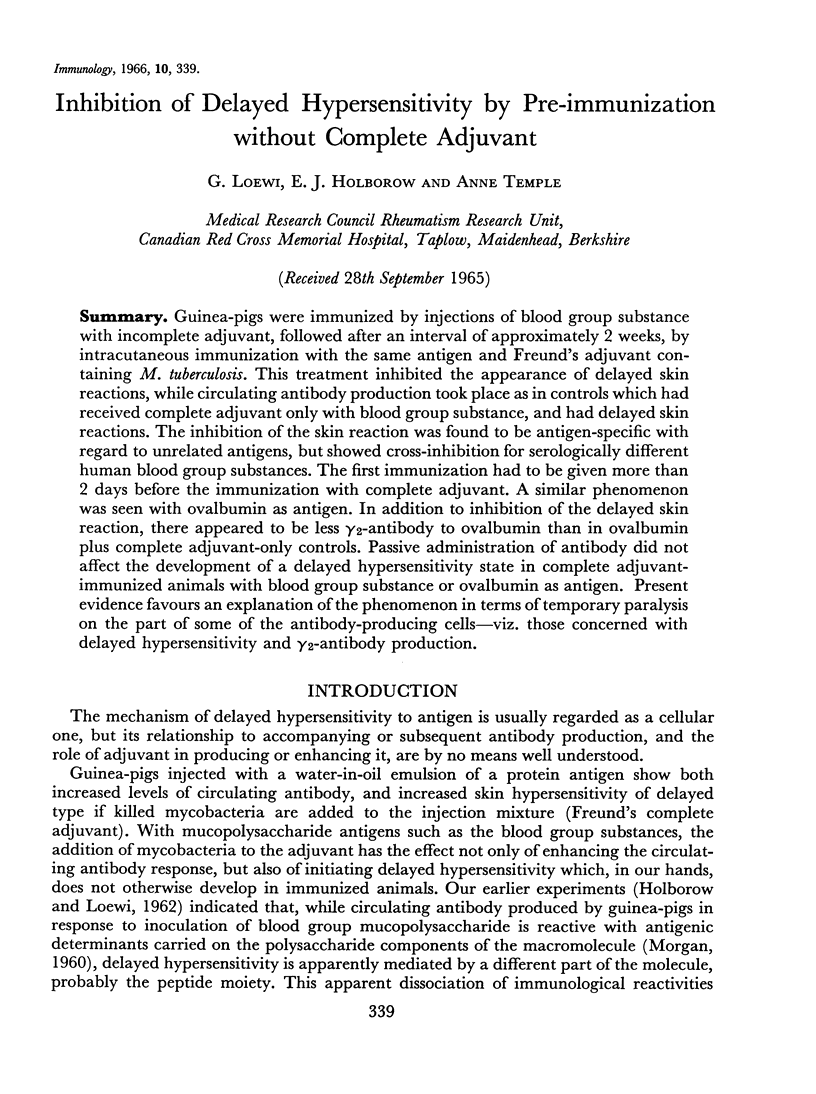
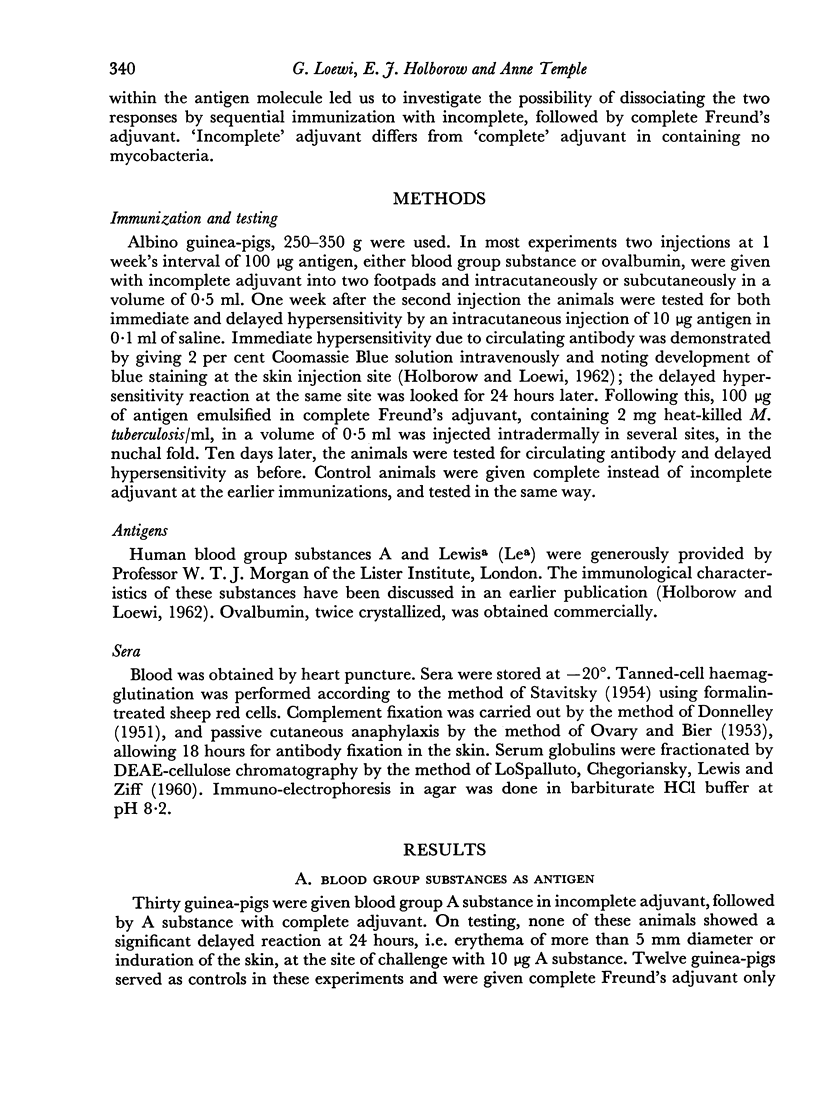
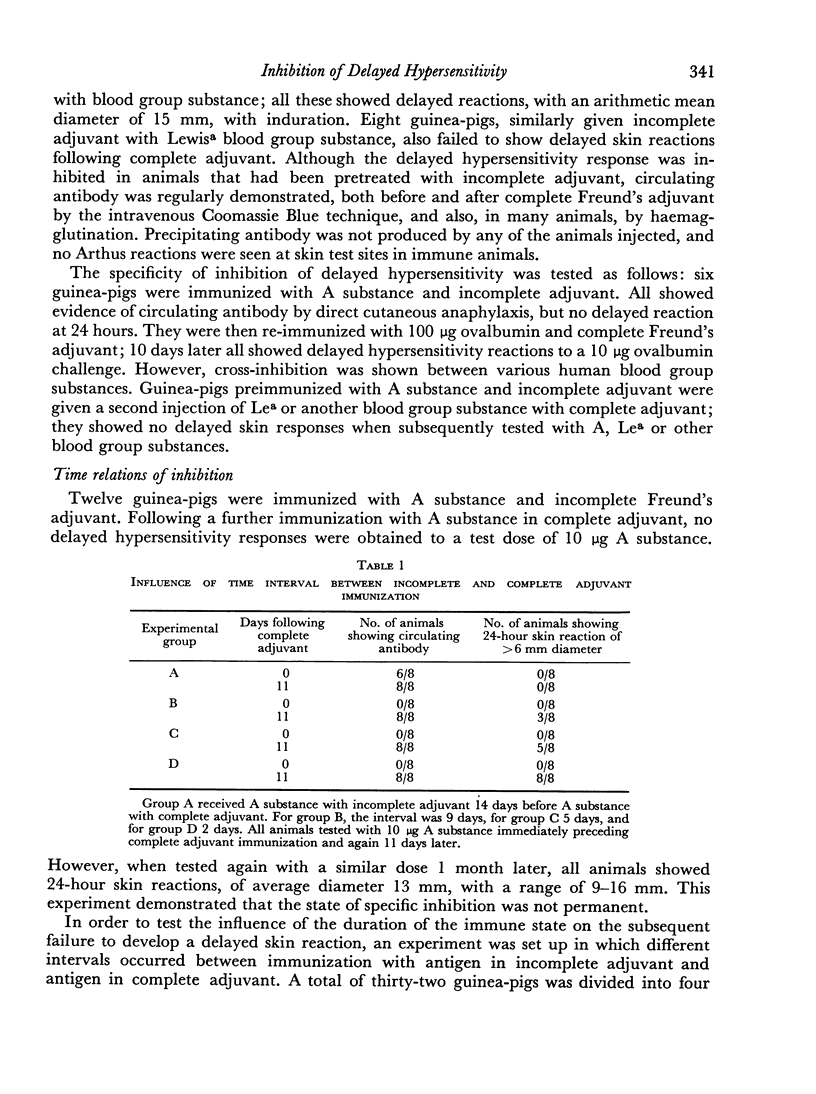
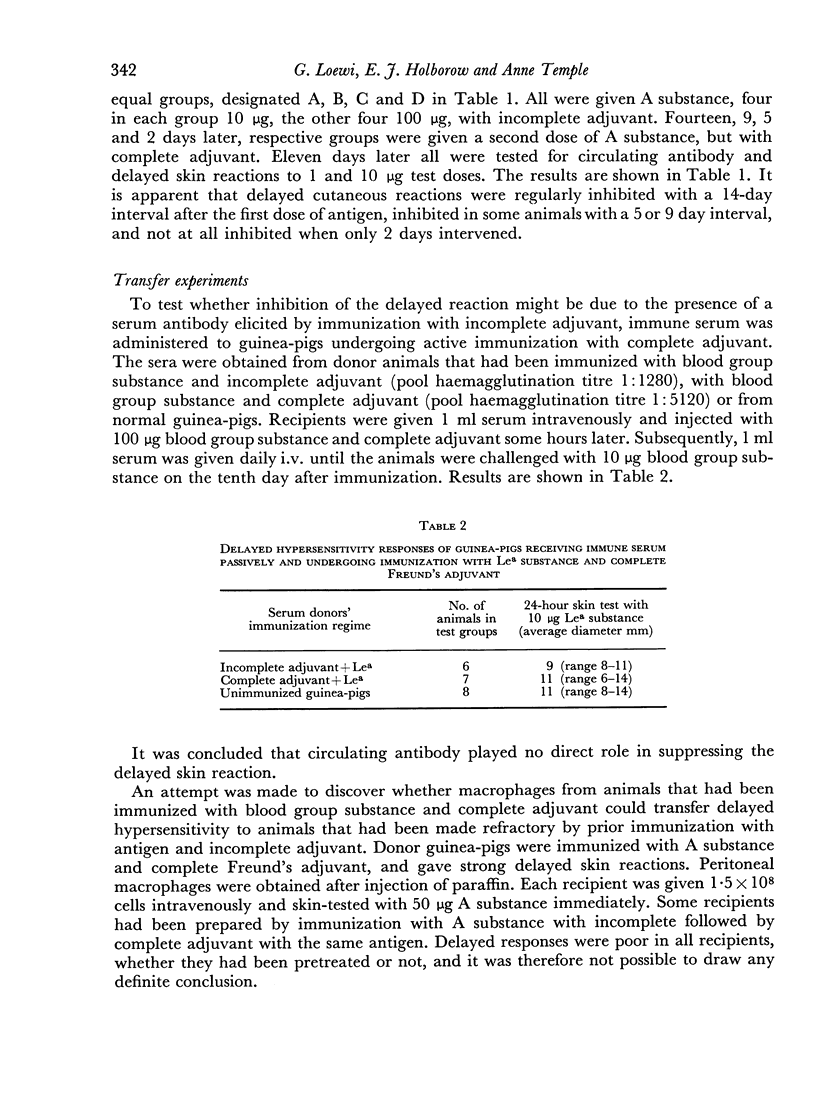
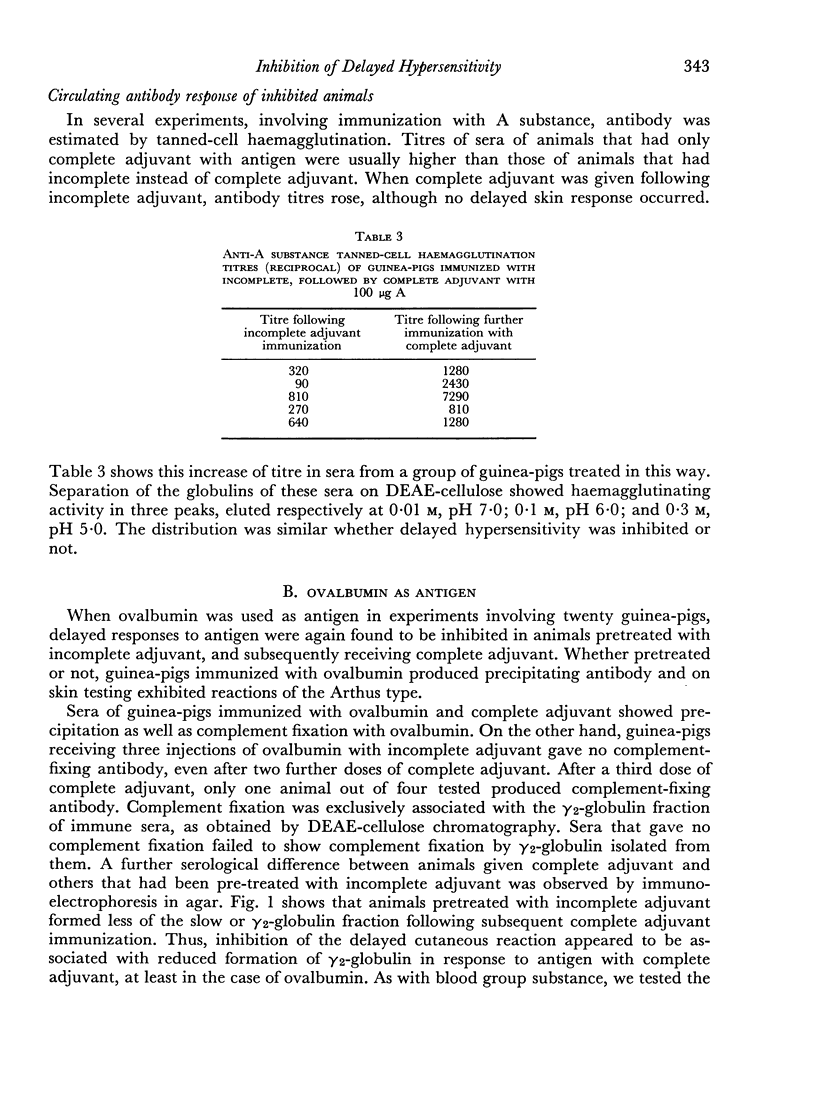
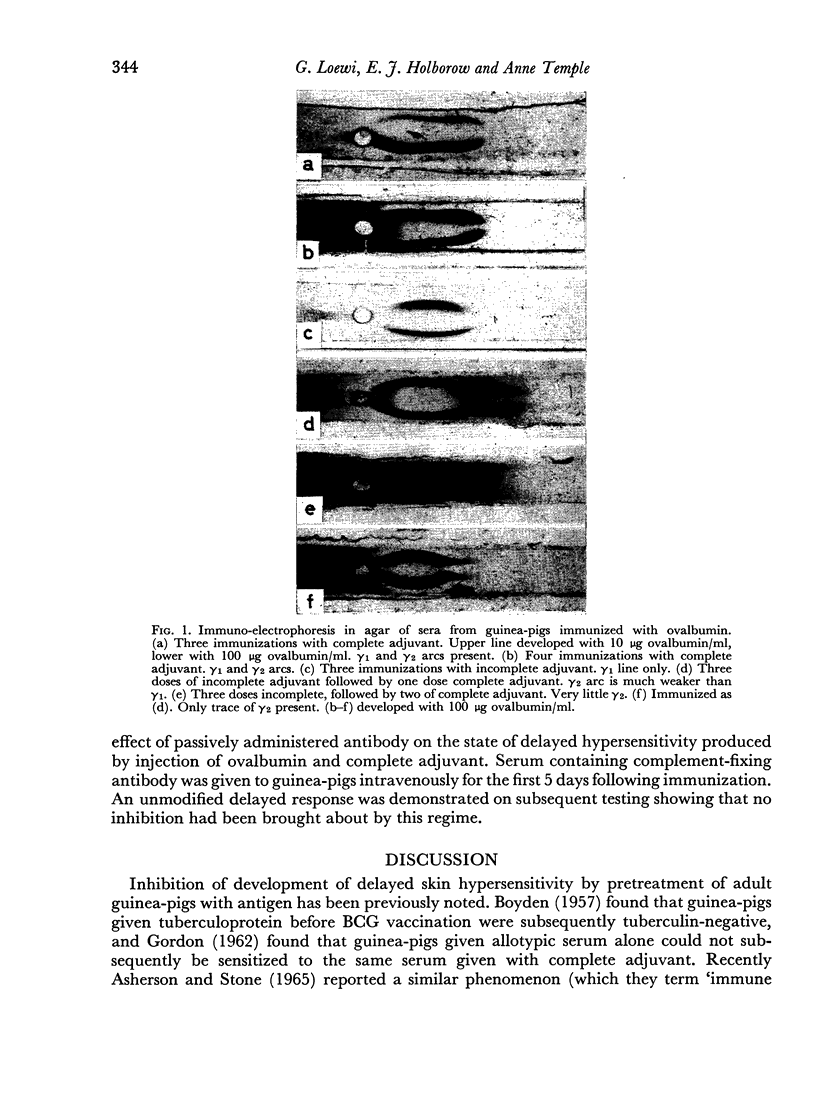
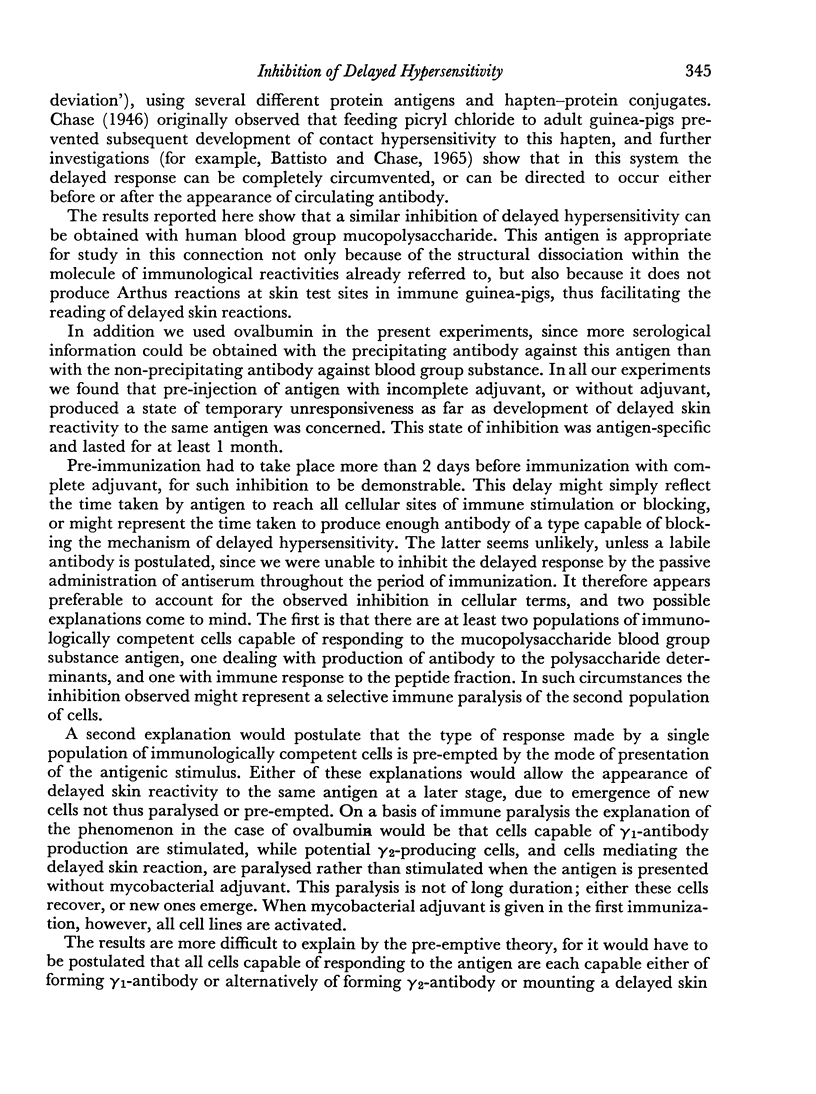
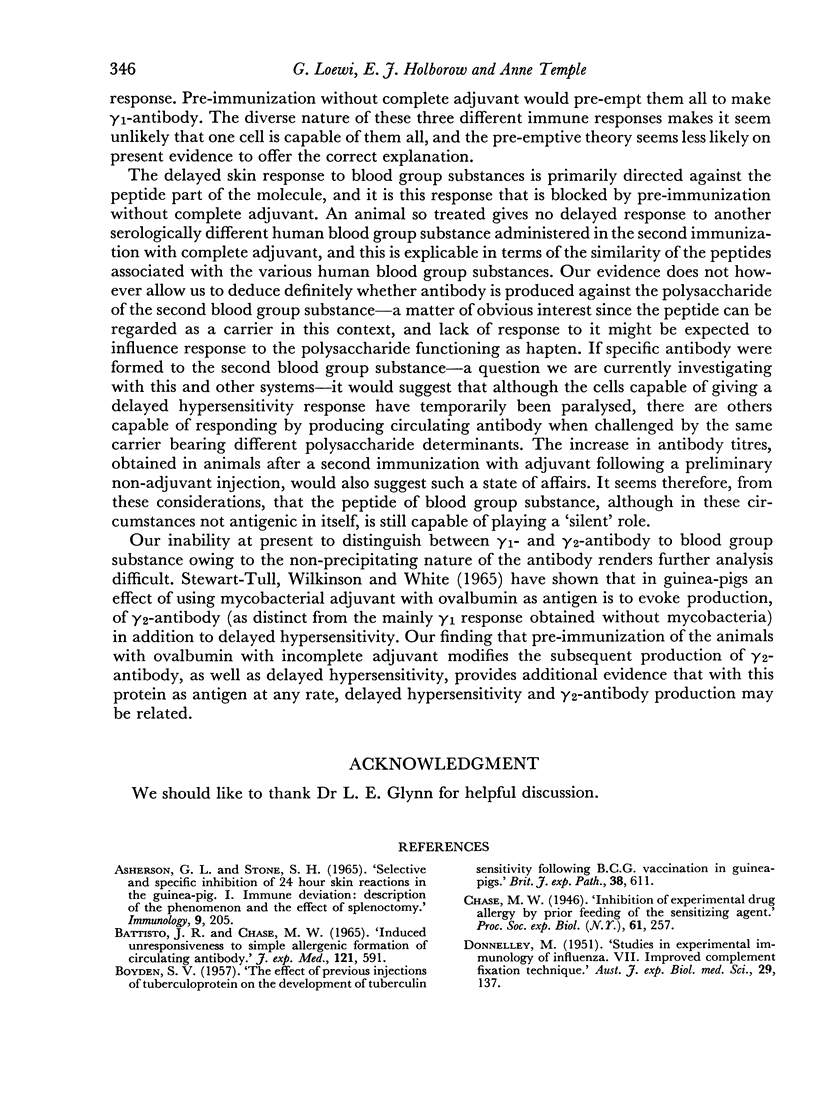
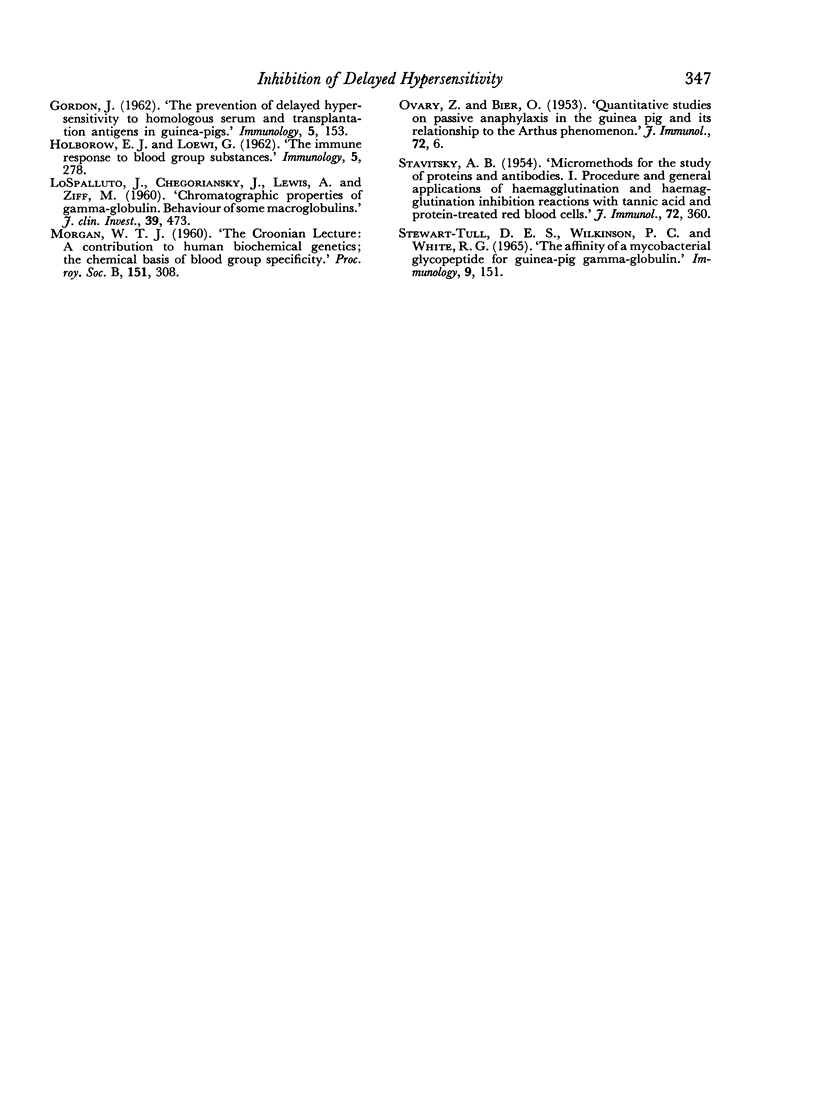
Images in this article
Selected References
These references are in PubMed. This may not be the complete list of references from this article.
- Asherson G. L., Stone S. H. Selective and specific inhibition of 24 hour skin reactions in the guinea-pig. I. Immune deviation: description of the phenomenon and the effect of splenectomy. Immunology. 1965 Sep;9(3):205–217. [PMC free article] [PubMed] [Google Scholar]
- BATTISTO J. R., CHASE M. W. INDUCED UNRESPONSIVENESS TO SIMPLE ALLERGENIC CHEMICALS. II. INDEPENDENCE OF DELAYED-TYPE HYPERSENSITIVITY AND FORMATION OF CIRCULATING ANTIBODY. J Exp Med. 1965 Apr 1;121:591–606. doi: 10.1084/jem.121.4.591. [DOI] [PMC free article] [PubMed] [Google Scholar]
- BOYDEN S. V. The effect of previous injections of tuberculoprotein on the development of tuberculin sensitivity following B.C.G. vaccination in guinea-pigs. Br J Exp Pathol. 1957 Dec;38(6):611–617. [PMC free article] [PubMed] [Google Scholar]
- DONNELLEY M. Studies in experimental immunology of influenza. VII. An improved complement-fixation technique. Aust J Exp Biol Med Sci. 1951 Mar;29(2):137–146. doi: 10.1038/icb.1951.16. [DOI] [PubMed] [Google Scholar]
- GORDON J. The prevention of delayed hypersensitivity to homologous serum and transplantation antigens in guinea pigs. Immunology. 1962 Jan;5:153–160. [PMC free article] [PubMed] [Google Scholar]
- HOLBOROW E. J., LOEWI G. The immune response to bloodgroup substances. Immunology. 1962 Mar;5:278–286. [PMC free article] [PubMed] [Google Scholar]
- LOSPALLUTO J., CHEGORIANSKY J., LEWIS A., ZIFF M. Chromatographic properties of gamma globulin: behavior of serum gamma macroglobulins. J Clin Invest. 1960 Mar;39:473–480. doi: 10.1172/JCI104061. [DOI] [PMC free article] [PubMed] [Google Scholar]
- MORGAN W. T. A contribution to human biochemical genetics; the chemical basis of blood-group specificity. Proc R Soc Lond B Biol Sci. 1960 Feb 2;151:308–347. doi: 10.1098/rspb.1960.0002. [DOI] [PubMed] [Google Scholar]
- OVARY Z., BIER O. G. Quantitative studies on passive cutaneous anaphylaxis in the guinea pig and its relationship to the Arthus phenomenon. J Immunol. 1953 Jul;71(1):6–11. [PubMed] [Google Scholar]
- STAVITSKY A. B. Micromethods for the study of proteins and antibodies. I. Procedure and general applications of hemagglutination and hemagglutination-inhibition reactions with tannic acid and protein-treated red blood cells. J Immunol. 1954 May;72(5):360–367. [PubMed] [Google Scholar]



